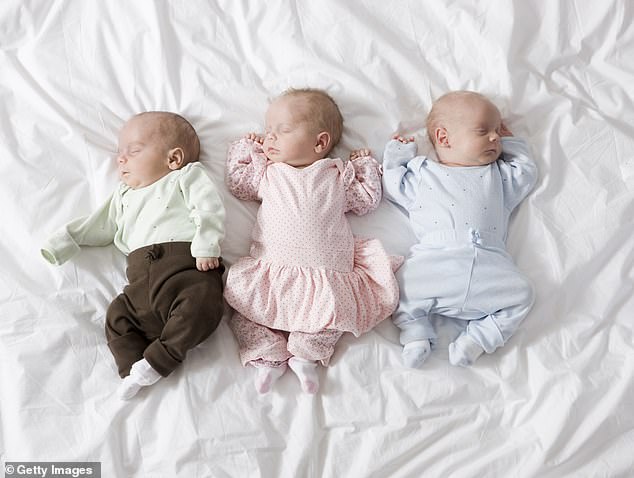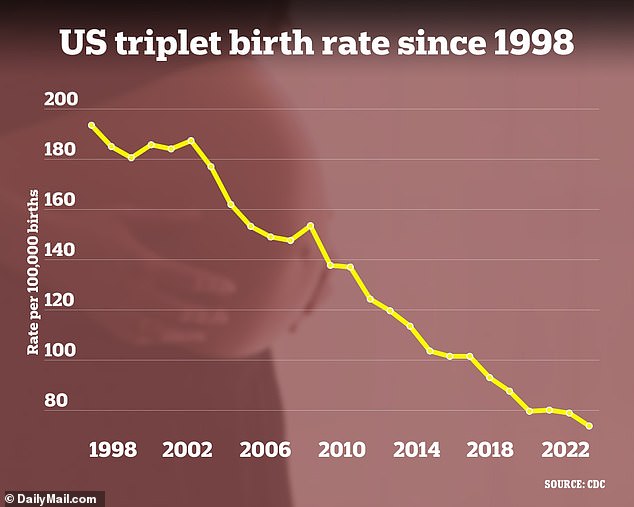Over the past three decades, the triplet birth rate has more than halved, according to a new report.
The CDC reported Thursday that the rate of higher triplets and multiple births fell from 193.5 per 100,000 births in 1998 to 73.8 per 100,000 births in 2023.
And the biggest falls were observed between 2009 and 2023.
Researchers have attributed the drop primarily to changes in fertility treatments and methods.
In the past, it was common for a fertility doctor to implant two or more fertilized embryos into a woman’s uterus after in vitro fertilization (IVF), to increase the chance that one would develop and produce a pregnancy.
This led to more cases of twins, triplets and quadruplets between 1980 and 1998, as fertility treatments became more advanced, affordable and accessible. In the mid-1990s, 30 percent of all IVF pregnancies resulted in twins, triplets, or higher-order births.
Doctors became concerned about the number of twins and triplets being born to people using IVF, since a pregnancy with more than one fetus is more likely to have complications than a pregnancy with a single fetus.
This includes a higher chance of premature birth, miscarriages, and conditions such as preeclampsia, where blood pressure during pregnancy rises dangerously high.
Then, in the early 2000s, doctors began passing regulations on the number of embryos that could be implanted during IVF, issuing new guidelines almost every two years until 2004, resulting in fewer multiple births.
The National Center for Health Statistics tracked data on triplet or higher-order pregnancies for more than two decades.

In natural births, approximately one in every 10,000 births is a set of triplets. Adding triplets born through IVF, the rate of triplets during pregnancy is approximately 7.38 per 10,000 births.
Dr. Amanda Williams, medical director of the March of Dimes, a nonprofit focused on maternal health, said having multiple pregnancies can be significantly more dangerous, putting the health of the mother and fetus at risk.
Overall, Dr. Williams said, he told CNN“This is good news for families, because triplets and higher-order pregnancies are much riskier for mother and baby.”
The latest recommendations from the American Society for Reproductive Medicine recommend implanting only one embryo at a time in a woman undergoing IVF under the age of 35, and no more than four embryos at a time in a woman undergoing IVF over the age of 40.
About 240,000 women undergo IVF each year, during which a woman’s egg is fertilized with sperm outside the body and then implanted in her uterus in the hope of producing a viable pregnancy.
The new CDC report uses data from the National Center for Health Statisticswhich is a branch of the CDC, and looks at births in the US since 1998.
The decline from 1998 to 2023 was larger in some demographic groups compared to others, which epidemiologists say may be because certain groups, such as whites, had access to IVF treatments earlier than others.
In white women, the birth rate of triplets and higher order fell 71 percent since 1998. In Hispanic women, the birth rate of triplets and higher order fell 25 percent since 1998.
The triplet conception rate naturally does not appear to have changed significantly, but as it is a rare event, it does not distort the IVF trend data.
Approximately one in every 10,000 pregnancies is natural triplets, according to Hillcrest Medical Center.


